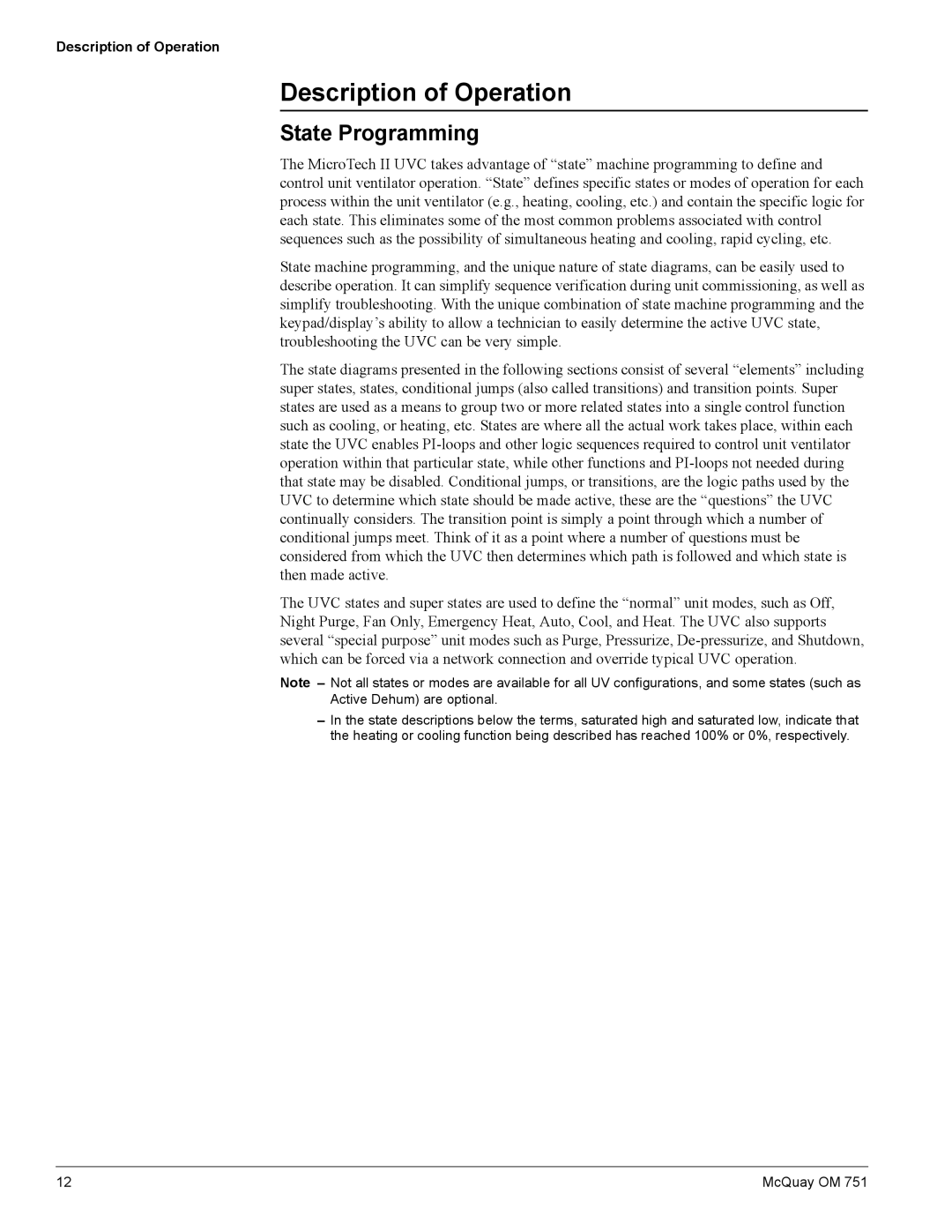
Description of Operation
Description of Operation
State Programming
The MicroTech II UVC takes advantage of “state” machine programming to define and control unit ventilator operation. “State” defines specific states or modes of operation for each process within the unit ventilator (e.g., heating, cooling, etc.) and contain the specific logic for each state. This eliminates some of the most common problems associated with control sequences such as the possibility of simultaneous heating and cooling, rapid cycling, etc.
State machine programming, and the unique nature of state diagrams, can be easily used to describe operation. It can simplify sequence verification during unit commissioning, as well as simplify troubleshooting. With the unique combination of state machine programming and the keypad/display’s ability to allow a technician to easily determine the active UVC state, troubleshooting the UVC can be very simple.
The state diagrams presented in the following sections consist of several “elements” including super states, states, conditional jumps (also called transitions) and transition points. Super states are used as a means to group two or more related states into a single control function such as cooling, or heating, etc. States are where all the actual work takes place, within each state the UVC enables
The UVC states and super states are used to define the “normal” unit modes, such as Off, Night Purge, Fan Only, Emergency Heat, Auto, Cool, and Heat. The UVC also supports several “special purpose” unit modes such as Purge, Pressurize,
Note – Not all states or modes are available for all UV configurations, and some states (such as
Active Dehum) are optional.
–In the state descriptions below the terms, saturated high and saturated low, indicate that the heating or cooling function being described has reached 100% or 0%, respectively.
12 | McQuay OM 751 |
